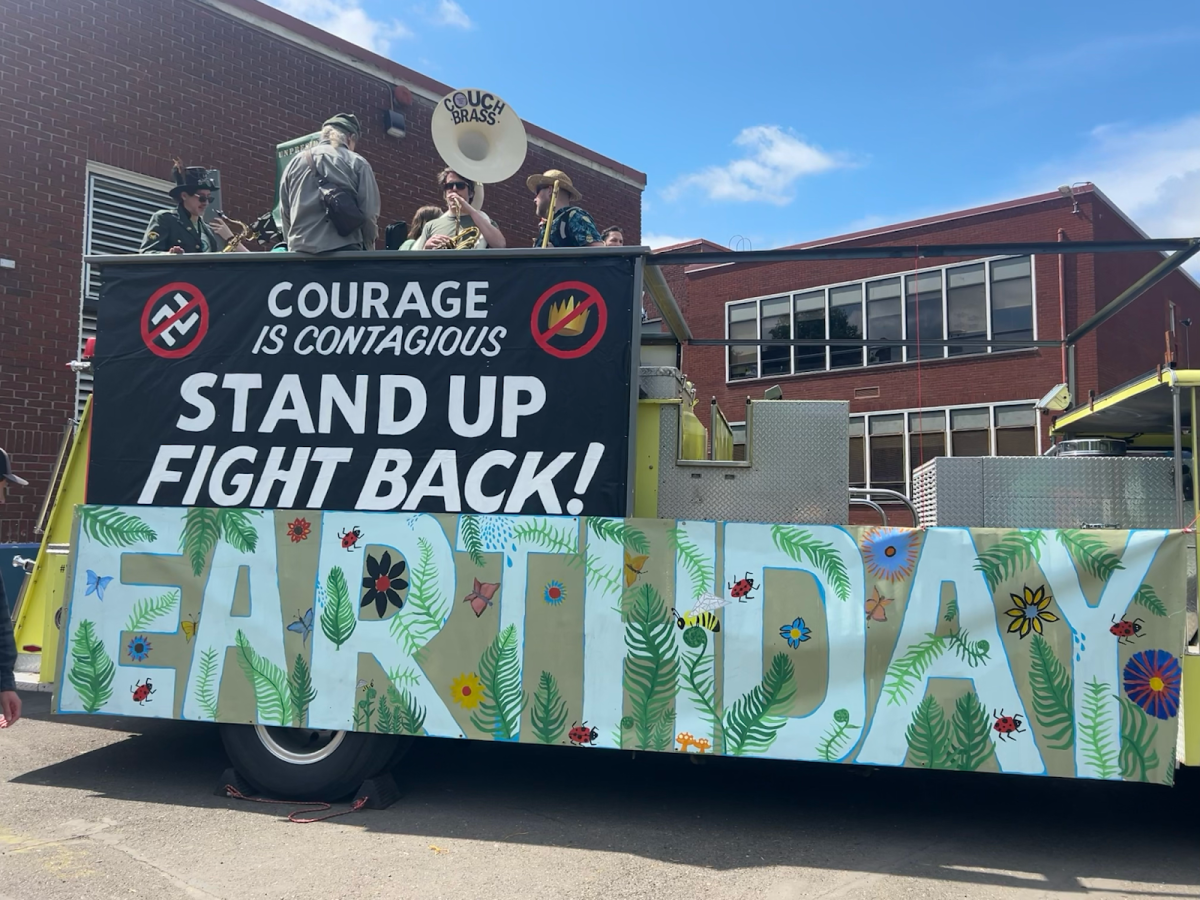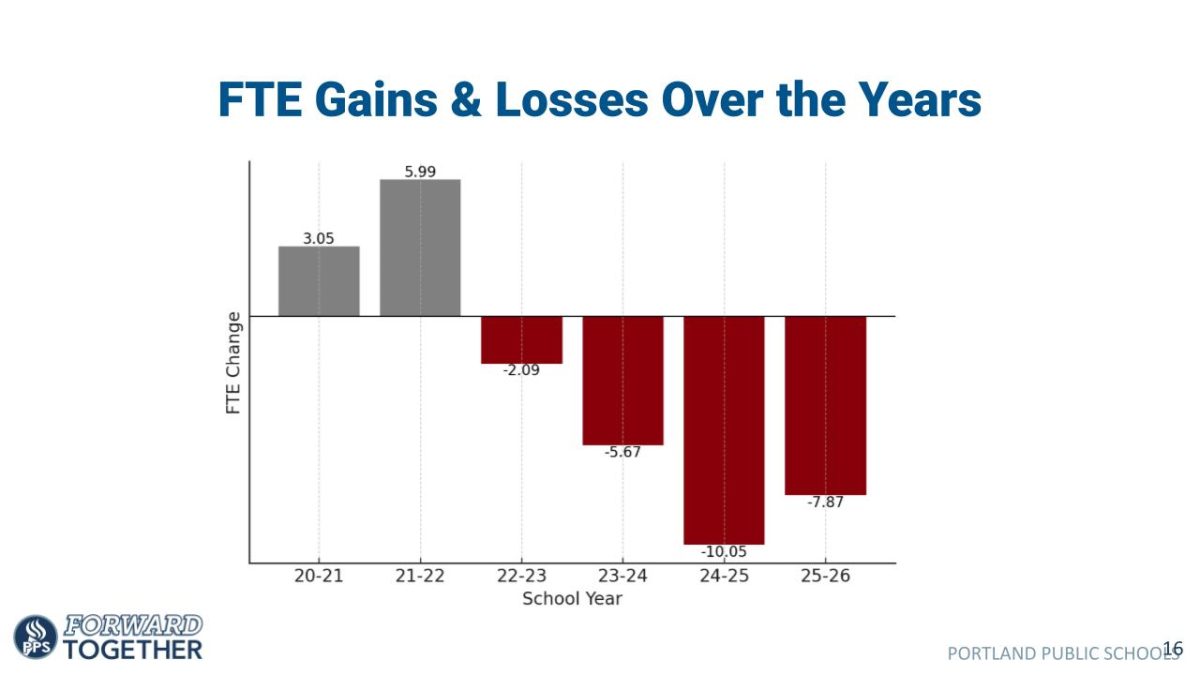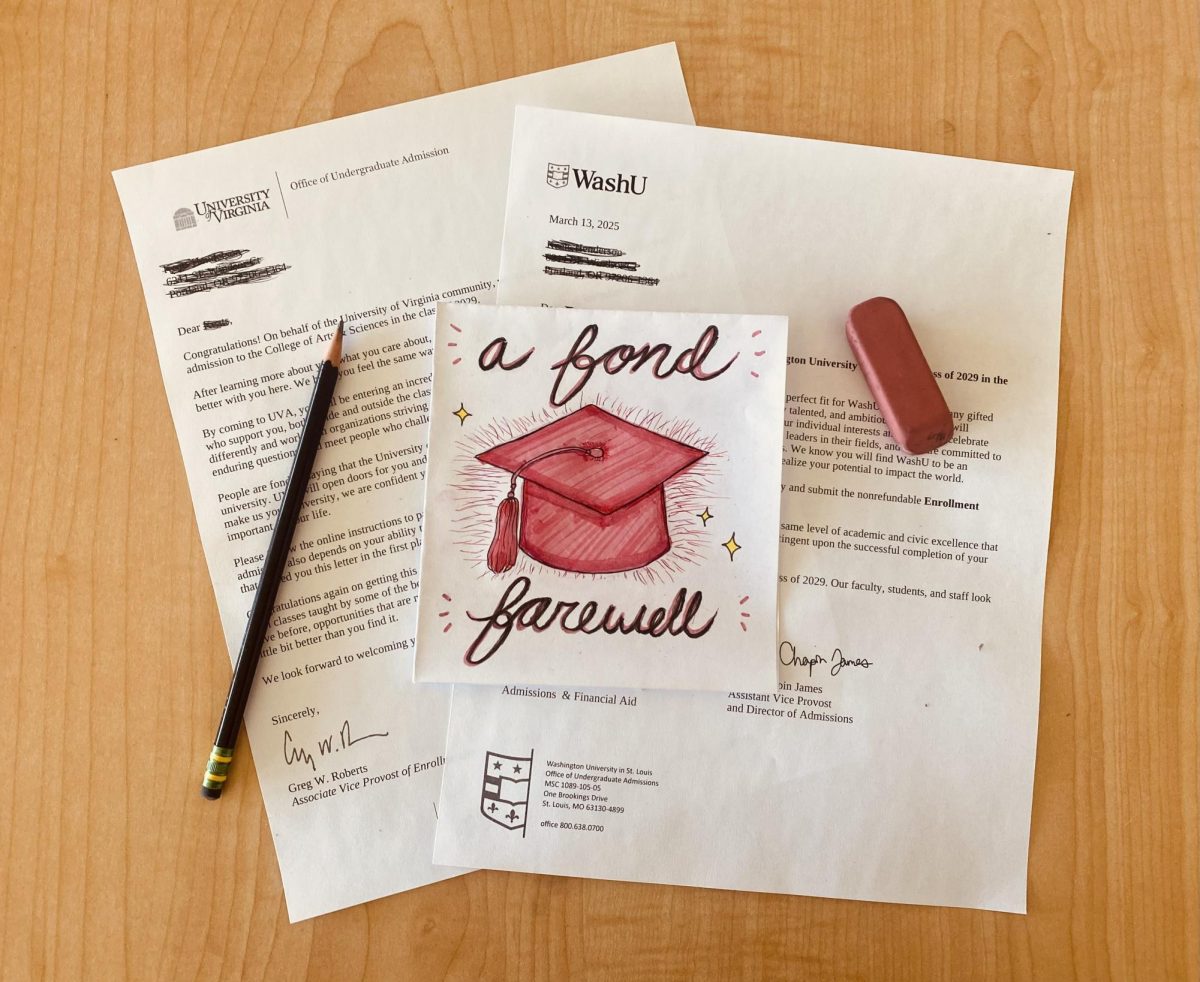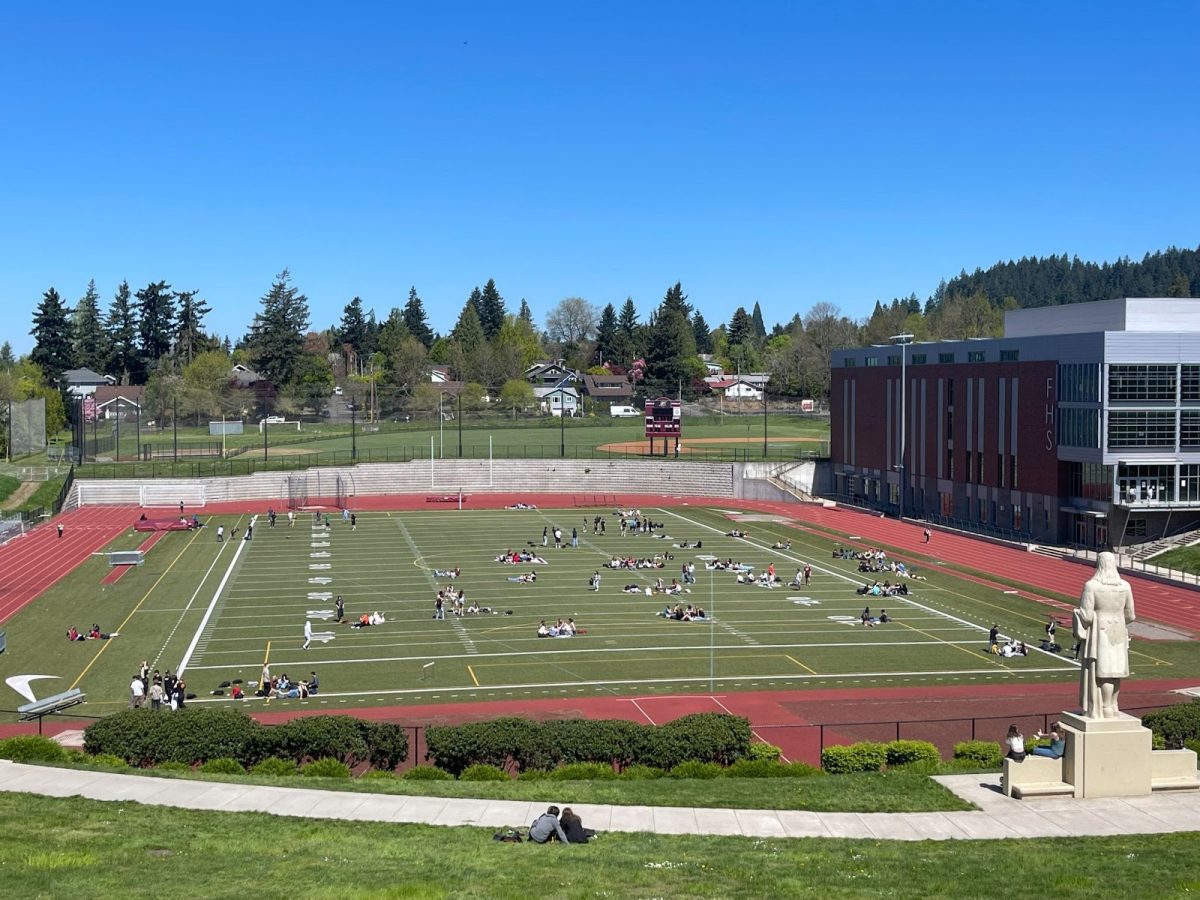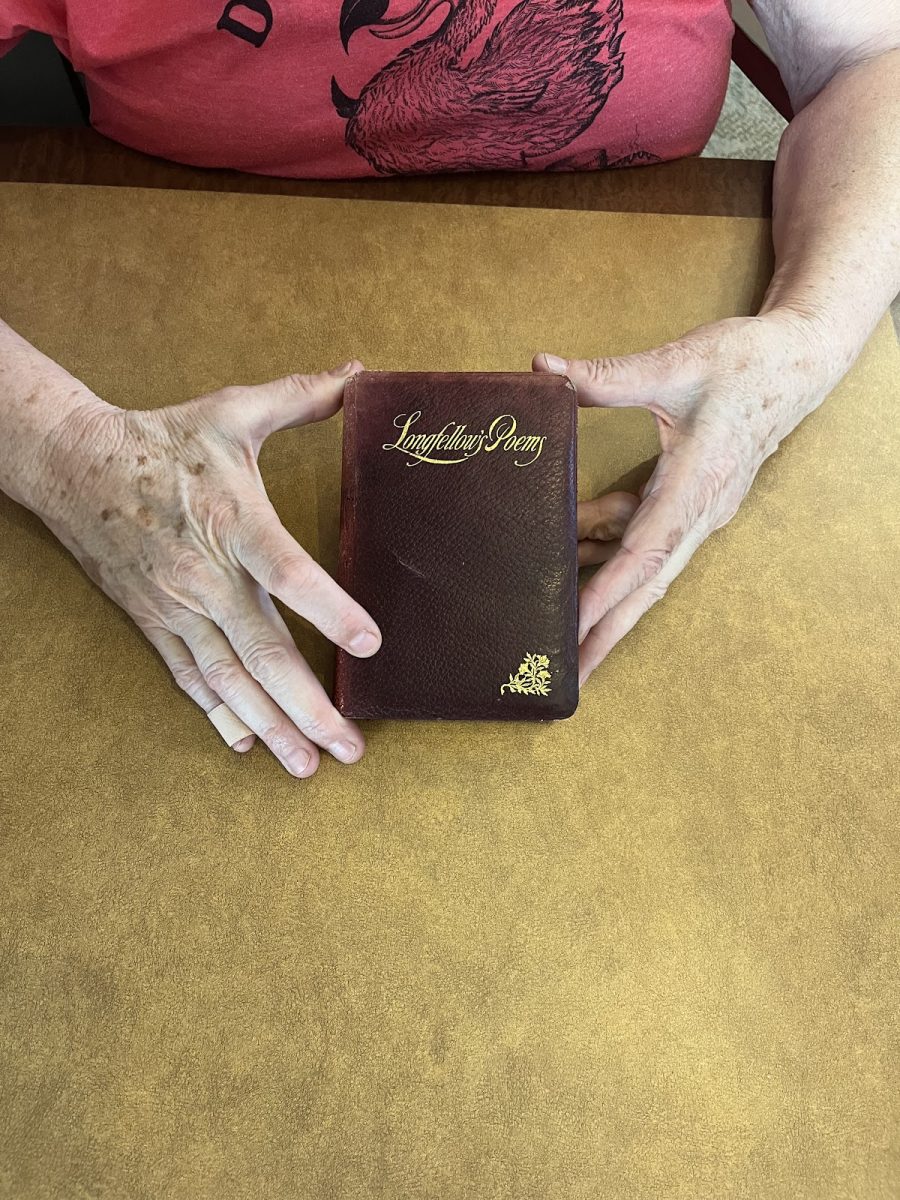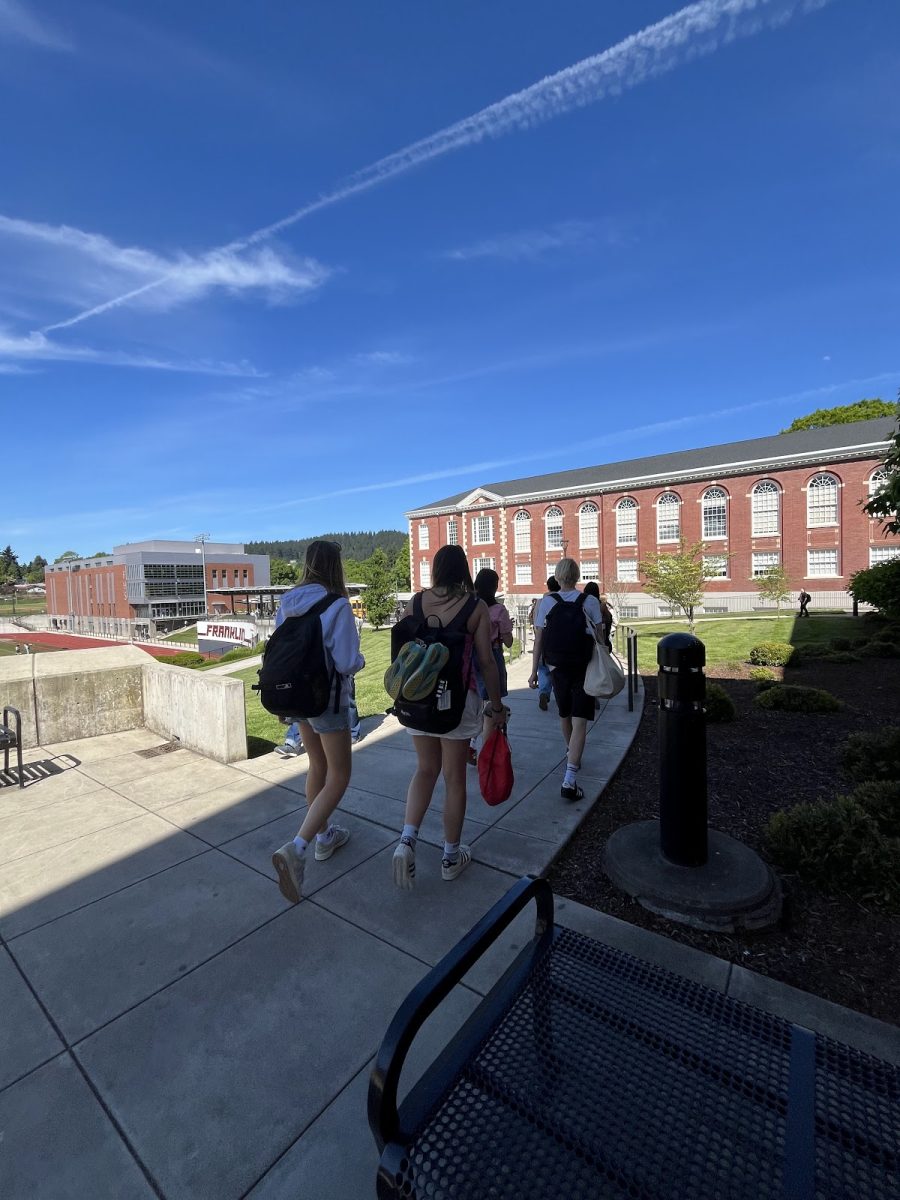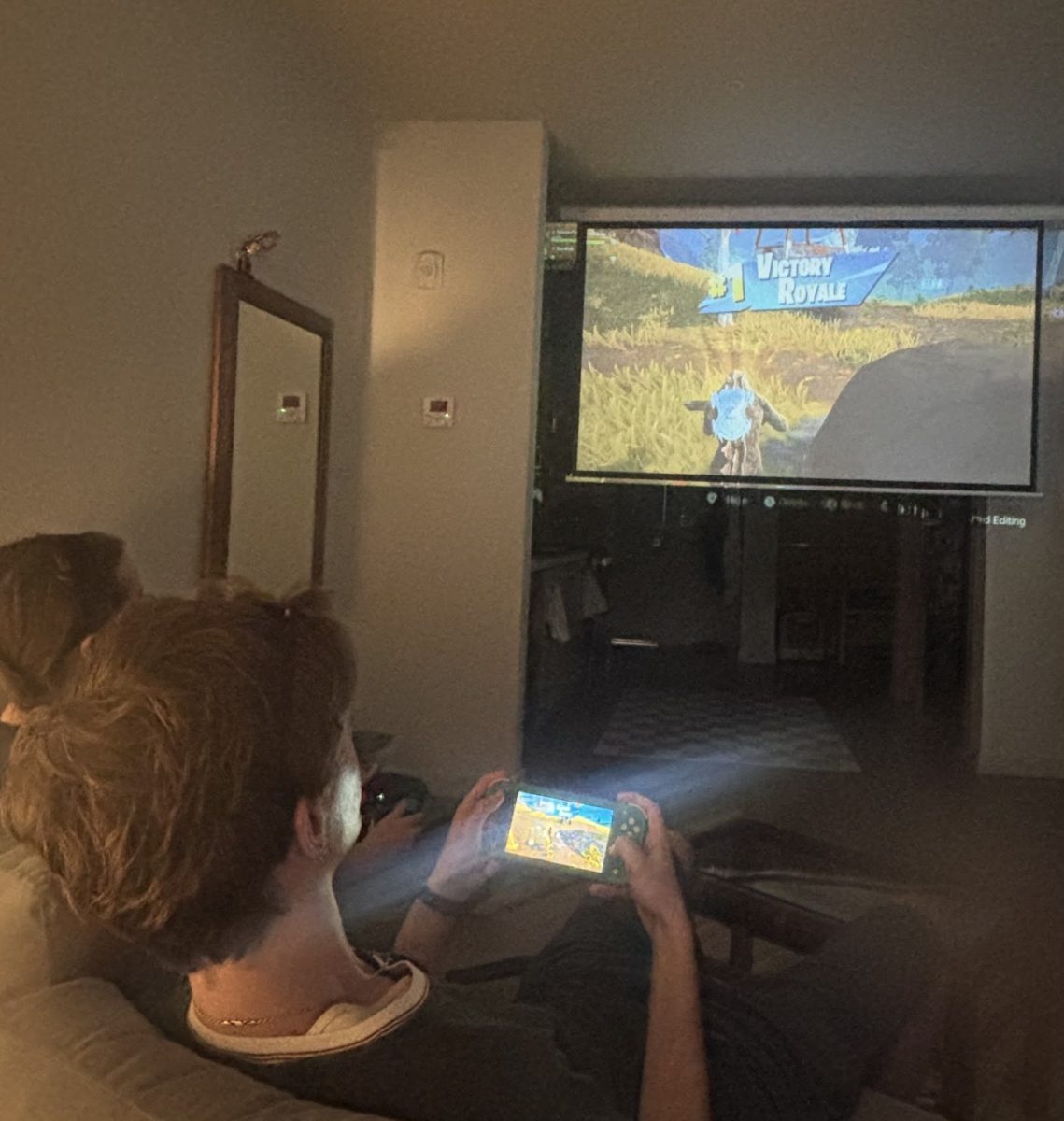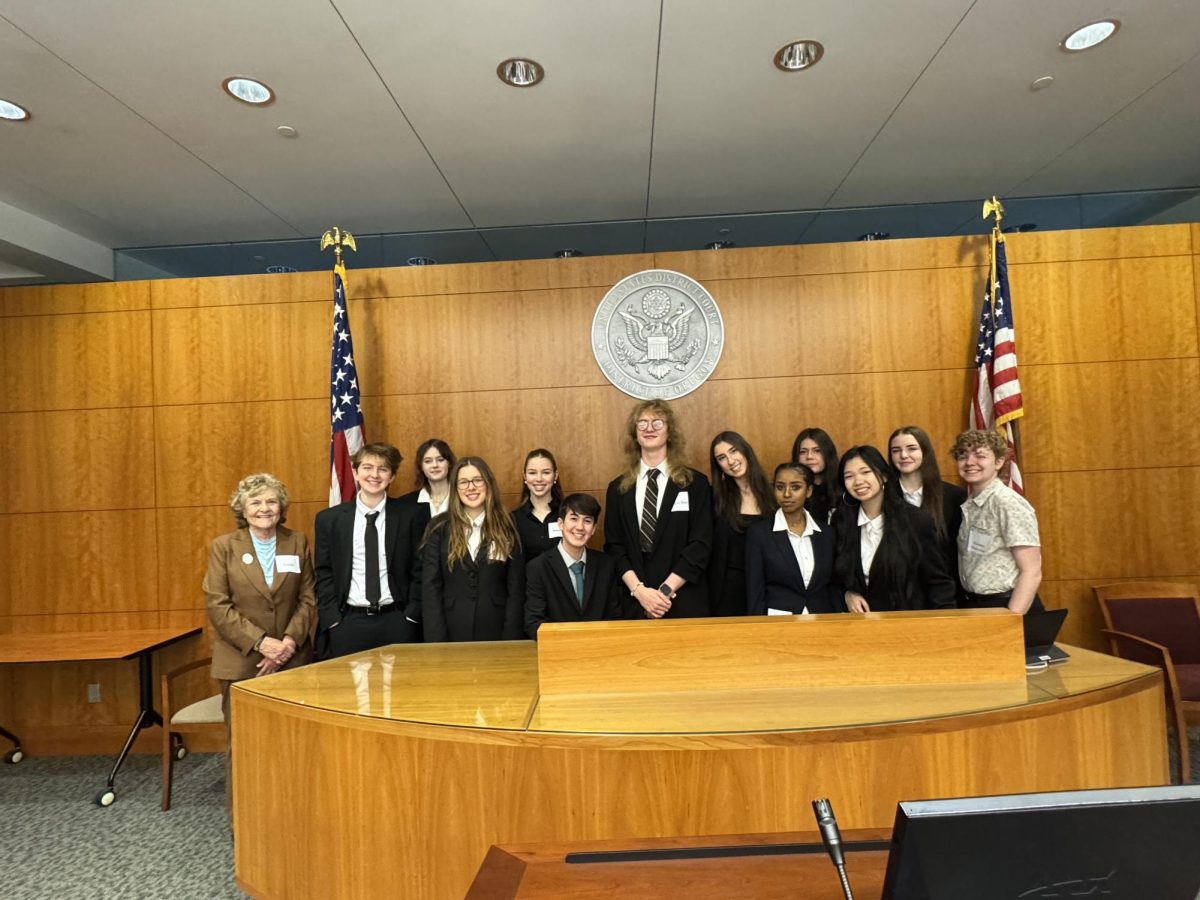For years, a proposed freeway expansion plan has sparked many questions about its effect on the Albina neighborhood, and more specifically the students of Harriet Tubman Middle School. In the past few months, multiple setbacks have come to pass, barring the plan from immediate implementation. But the fate of Tubman is still up in the air; the only thing that’s clear is that it won’t displace another school community.
In 2017, a proposal called the “Rose Quarter Improvement Project” was released by Oregon Department of Transportation (ODOT). It’s part of ODOT’s freeway expansion plan to expand Interstate 5. The project proposes the widening of the freeway, which runs directly next to Harriet Tubman Middle School. The plan has been debated and rewritten multiple times throughout the years.
A major issue with the proposed plan is that it expands the freeway even closer to Tubman Middle School. Many climate activists and school community members actively oppose the plan for this reason, many parents protesting that the freeway expansion would put children even more at risk from breathing in toxic fumes radiating off the freeway. Even without the freeway expansion, the school has faced poor air quality issues in the past few years. A study conducted by Portland State University in 2018 concluded that the school had elevated levels of air pollutants in comparison to other parts of the neighborhood, depending on meteorology and time of day.
Adah Crandall is a teen activist, an advocate against freeway expansion, and a member of the groups Sunrise Movement PDX and No More Freeways, both integral in the local fight against the project. She also has a personal connection to the issue, as she attended Tubman Middle School.
“It was pretty scary to be a student [at Tubman],” she says. “You would walk outside to recess and there would be a field and a playground and then right next to it is this giant freeway.” She explains that in order to counter the effects of the toxic fumes radiating from the road, Portland Public Schools (PPS) spent $10 million to install an air filtration system into the school.
“Imagine what a school district could do with $10 million if they weren’t trying to meet students’ basic needs to clean air,” adds Crandall.
Her biggest critique of the plan is that it likely won’t come to pass, and if it does, it won’t reduce congestion, which is the whole point of it.
“[ODOT] is saying that adding more lanes is going to reduce traffic, which has been proven again and again and again to not work.” She also speaks on the multiple lawsuits and lack of funding that have been hindering ODOT from carrying out the project. “They’re operating as if the project is completely inevitable, which it’s not. ODOT has tricked [PPS] essentially because the actual likelihood of the Rose Quarter Expansion happening is just getting [less and less].”
In terms of the location of the school, Crandall supports whatever choice the current Tubman families and community wish to make, but she is adamant that if the school moves it should not displace other students and that the state should fully fund it.
“I personally would like to see Tubman kept where it is because I don’t think it’s fair for students to have to move to accommodate additional freeway lanes,” she says. “But if this is an opportunity to move students away from pollution, it should be taken, but on the condition that [Tubman] is working on their own timeline and not on ODOT’s timeline.”
She reiterates that the decision should be made by the community, for the community, and not rushed to fit with the project timeline: “If PPS is deciding to move Tubman, it should be because that is what the community wants them to do and what’s best for the community, not because it’s most convenient to ODOT.”
One recent plan to accommodate the freeway expansion was to relocate Tubman School to the campus of Dr. Martin Luther King Jr. Elementary School, effectively displacing the pre-existing school community there. However, mass public outrage and protest from MLK School community members and others resulted in PPS officially shutting down the idea.
On Jan. 28, 2022, PPS released a statement about the future of Martin Luther King Jr. Elementary School.
“As plans are underway to widen the Interstate 5 freeway—moving even closer to the current site of Harriet Tubman Middle School—this project will increase the significant negative impacts on the Harriet Tubman School Community,” it acknowledged. Later in the letter they shared what most people assumed as plans to keep MLK School as is: “…as we prepare for additional community discussions, we are sharing that we agree that this future middle school should enhance—and not displace—existing school communities in the Albina neighborhood.”
Gary Hollands, Chair of the Facilities and Operations Committee of the PPS Board of Education, reiterated that PPS has no say in the logistics of the freeway project, just on the impacts to the schools. He mentioned steps moving forward, stating that “we’ve been reaching out to specific communities that have been most affected by [the proposal].”
Hollands emphasizes the importance of making the best choice for the students, though most plans include moving Tubman to continue with the expansion. “There’s an environmental issue with our kids in middle school that we need to alleviate. So our goal is to move, mark, relocate Tubman School to a better environment friendly area.”
However, PPS’s statement is not the only new update on this project. On Jan. 19, 2022, federal officials directed ODOT to complete an environmental impact statement in order to regain approval for beginning construction. This new statement will push the project back by at least five to six months, according to an ODOT official, and will add to the overall cost.
Tubman and MLK are both located in the Albina neighborhood of North Portland. Historical conflict around the freeway in the Albina neighborhood is complex. The original construction of the freeway many years ago tore into and divided the area, a thriving Black neighborhood.
In a statement from their website, Albina Vision Trust (AVT), a local organization, states their concern with the new project: “[Albina neighborhood] is special. lt is a place where the racial inequity of urban renewal came, then came again, and again. Promises were made and broken. Black people and immigrants were displaced. Wealth was taken.The construction of lnterstate 5 (l-5) was central to this unjust history and any future investment in the area should strive to repair the damage done…”
Speaking specifically to the issue of the school, the statement says; “…Harriet Tubman Middle School and the many children of the future who will spend their days in lower Albina will forever be impacted by unsafe surface routes and elevated emissions. AVT advocates that future highway plans prioritize children and connect neighborhoods.”
A new piece of the plan proposes a “Hybrid Option 3” which, in theory, prioritizes “revitalizing the Albina District.” It includes adding a much larger freeway cap than originally planned, essentially creating a tunnel upon which new development can be made. Many people and groups support this idea, Governor Kate Brown included, in her push for the project team to follow through with this option rather than the original plan.
“It is pretty nonsensical that ODOT is claiming that expanding the freeway is restorative justice for the Albina neighborhood when the original construction of I-5 is what displaced people in the first place,” states Crandall. She supports the freeway cap to bridge the divide in the community, but not the construction of additional lanes.
“The groups I’m in fully support Albina Vision Trust’s vision and capping the freeway, but capping the freeway can be done without expanding it and worsening the pollution.” She explains that the cap would help heal the divisions of the neighborhood and foster growth. “ODOT has a history of racist planning when it comes to their freeway expansions and this is no different from that. They have a lot more money to spend on PR making it look like restorative justice this time, but ultimately, it’s following the same pattern that they followed for decades.”
As of Feb. 14, ODOT must re-budget and rethink some of the logistics of the plan, as well as complete a new environmental impact test. If approved, it is set to begin implementation in 2023.


